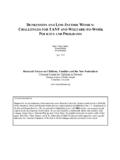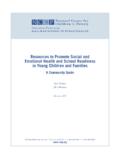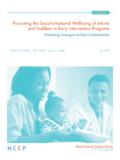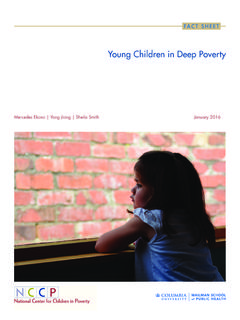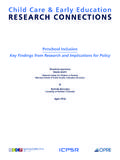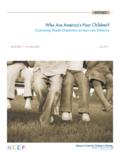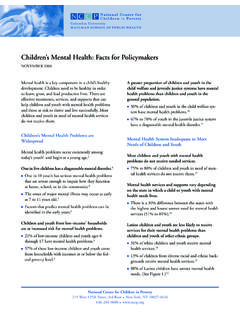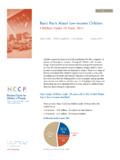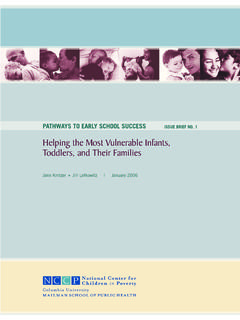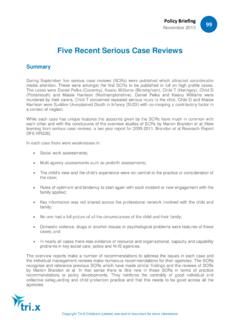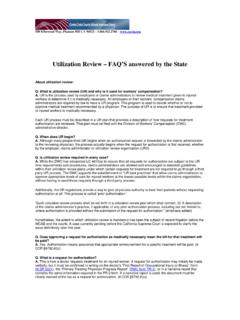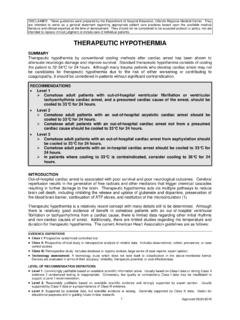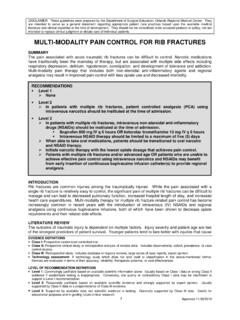Transcription of Depression, Substance Abuse, and Domestic Violence
1 depression , Substance abuse , and Domestic Violence Little is Known About Co-Occurrence and Combined Effects on Low-Income Families Sharmila Lawrence Michelle Chau Mary Clare Lennon June 2004. The National Center for Children in Poverty identifies and promotes strategies that prevent child poverty in the United States and that improve the lives of low-income children and families. depression , Substance abuse , and Domestic Violence : Little is Known About Co-Occurrence and Combined Effects on Low-Income Families depression , Substance abuse , and Domestic Violence These problems increase the odds that children will en- are often considered individual problems but, in fact, ter school without the cognitive, social, and emotional the societal costs of these issues are great. For the skills and competencies they need to succeed, thus set- adults, it is reflected in lost productivity and in high ting the stage for increased placement in special educa- health care costs. Either alone or in combination, these tion, grade retention, and ultimately, school drop-out.
2 Risk factors not only impair the ability to work, they also This synthesis summarizes recent research results and affect parenting processes, which can hinder children's finds a need for more information on two-generation development. approaches. Copyright 2004 by the National Center for Children in Poverty depression , Substance abuse , and Domestic Violence 2. Introduction Increasingly, research confirms the prevalence of depression , Domestic Violence , and sub- stance abuse among low-income women, particularly those on welfare. These problems, which may occur either singly or in combination, can pose serious barriers to employment and threats to child well-being. However, little is known about the extent to which these problems co-occur among low-in- come families and about their combined effect on children. Moreover, different treatment systems that address these problems are often not integrated. And, while these problems can be detrimental for child development, services for children are generally not linked with ser- vices for adults.
3 This report summarizes recent research on these issues and offers recom- mendations for future research and policy initiatives. Scope of the Problem In studies examining Domestic Violence , women on welfare who report abuse have higher rates of depression and drug and alcohol use, particularly if the abuse has been recent, com- pared to those who report no Recent findings from the Project on Devolution and Urban Change,2 a longitudinal study to examine the implementation and effects of the Per- sonal Responsibility and Work Opportunity Reconciliation Act of 1996 in four urban coun- ties, also indicate that: Women who are at higher risk for depression are more likely to report drug use. Women who have been physically abused are at higher risk for depression . These findings provide some evidence of the interconnections between these problems. Pre- vious reviews of the literature by the Research Forum at the National Center for Children in Poverty described the prevalence and consequences of depression3 and Domestic A study from the Joint Center for Poverty Research provides a similar overview of Substance Since these reports were issued, several new studies have produced results that rein- force the findings (see Box 1).
4 Importantly, some of these studies have considered the conse- quences of depression , Domestic Violence , and Substance abuse and their co-occurrence . for parenting practices and child well-being. depression , Substance abuse , and Domestic Violence 3. BOX 1: Rates of depression , Prevalence estimates of depression , Domestic Violence , and Substance abuse vary widely Domestic Violence , due in part to different measurements, sites studied, study designs, and populations in- and Substance abuse cluded. Below are rates of each condition in ranges to reflect the different results found in the literature and to illustrate the scope of the problems. depression Studies that have used measures of Major Depressive Disorder (MDD) and depressive symp- toms among women on welfare find that: Twelve-month prevalence rates of MDD range from 12 percent to 36 percent.*. High levels of depressive symptoms exist in 25 percent to 57 percent of the women.**. Domestic Violence Studies of women on welfare find:**.
5 Rates of recent or current physical abuse range from percent to percent. Lifetime prevalence rates of Domestic Violence range from 28 percent to 63 percent. Substance abuse Most data on drug use are based on self-reports that may be inaccurate due to underreporting:**. Estimates of current Substance use among those receiving welfare range from 6 percent to 37 percent. Nationally representative data indicate that fewer than 20 percent of welfare recipients use illicit drugs in a given year. _____. Sources: *. These studies used the Composite International Diagnostic Interview (CIDI; Andrews, G.; & Peters, L. (1998). The psychometric properties of the Composite International Diagnostic Interview. Social Psychiatry and Psychiatric Epide- miology, 33, pp. 80-88), an interview tool that allows researchers to evaluate specific symptoms, based on criteria from the Diagnostic and Statistical Manual of Mental Disorders, to determine a psychiatric diagnosis. Major depres- sion is one of many diagnoses that can be made.
6 **. These evaluations used the Center for Epidemiologic Studies depression Scale (CES-D; Radloff, (1977). The CES-D scale: A self-report depression scale for research in the general population. Applied Psychological Measure- ment, 1, pp. 385-401) to assess depressive symptoms. The CES-D is a self-report 20-item check list that requires individuals to report on the number and duration of their depressive symptoms. This is not a diagnostic tool and results cannot be equated with those of the CIDI. The CES-D describes the level of symptoms, while the CIDI pro- duces specific psychiatric diagnoses. **. The Conflict Tactics Scale (Straus, M. A. (1979). Measuring intrafamily conflict and Violence : The Conflict Tactics (CT) Scales. Journal of Marriage and the Family, 41(1), pp. 75-88) is the most commonly used instrument to mea- sure physical Violence between intimate partners. However, studies may use different items on the scale to measure abuse that can lead to variation in results.
7 In addition, while physical Violence rates tend to be most commonly mea- sured and comparable across studies, other types of abuse such as verbal, sexual, psychological, or economic abuse are not always measured. **. Pollack, H. A.; Danziger, S.; Seefeldt, K. S.; & Jayakody, R. (2002). Substance use among welfare recipients: Trends and policy responses. (JCPR Working Paper 278). Chicago, IL: Joint Center for Poverty Research, Northwest- ern University/University of Chicago < >. depression , Substance abuse , and Domestic Violence 4. Effects on Parenting and Children's Development While researchers have studied how depression , Domestic Violence , and Substance abuse separately affect parenting and child well-being,6 there is little research on the combined im- pact of these problems on low-income families. Several recent studies provide some insight. The CalWORKS Project The CalWORKS project, based at the California Institute for Mental Health, recently re- leased a report on TANF families suffering from alcohol or other drug issues, mental health problems, and Domestic Violence in Kern and Stanislaus The report highlighted a statistically significant association between a mother's Substance abuse , mental health, and Domestic Violence problems and parent frustration, as well as lack of social support.
8 The CalWORKS findings also indicate that children (aged 6 and under) in families who are identified as having all three problems are at two to five times greater risk for: Homelessness Use of food banks Lack of needed medical care Unreliable or unsafe child care Placement in foster care by child welfare services Moreover, mothers of children (aged 7 11) in families with any of these conditions reported more negative behavior than those in families without the conditions, particularly when mothers had mental health problems. Mothers of older children (aged 12 17) rated their children's behavior more negatively when they (the mothers) experienced all three problems. Women's Employment Study The Women's Employment Study examines the effect of welfare to work transitions on parenting and child behavior through a longitudinal survey of former and current welfare recipients in Michigan from 1997 to 1999. Recently released findings reveal that any mental health condition was associated with an increase in parental Looking at children's behavior, the study found that maternal mental health problems and drug use were associated with an increase in internalizing and externalizing behavior prob- lems in children aged 2 to 12.
9 However, there was no statistically significant association be- tween Domestic Violence and child behavior problems in this study. Early Head Start Study of Fathers of Newborns One of the only recent studies to look at fathers' mental health, the Early Head Start Study9. found that fathers (of newborns) who were at risk for depression were: Less involved with their children. depression , Substance abuse , and Domestic Violence 5. Spent less time alone with their children. Engaged in fewer activities with their children. Performed less caregiving activities. Interventions That Help Children and Parents Early Head Start It is possible for interventions to improve parenting and child development. The Early Head Start program (see Box 2) was designed as a two-generation program to promote child devel- opment from birth to age 3, strengthen families, and support service delivery to low-income families. Findings from the random-assignment evaluation reveal improvements in parenting among women suffering from depressive symptoms (measured using the CES-D Scale).
10 When they enrolled, although the program did not significantly reduce depressive symptoms or increase use of mental health These improvements include: Increase in parents' supportiveness during play. Decrease in detachment during parent-child play. Decrease in spanking and reduced severity of discipline. Early Head Start also seems to have a favorable impact on the socio-emotional behavior of children whose mothers are at risk for depression . Three-year-olds: Were more engaged in play with their parents. Had greater sustained attention with objects during play. Exhibited less negativity towards their parents during play. Projects That Provide Work Supports Research demonstrates that work supports that increase employment and income can have positive effects on parenting and child However, work supports alone are not sufficient to help families overcome mental health, Substance abuse , and Domestic Violence problems. A study synthesizing findings from the Minnesota Family Investment Program and New Hope demonstration found that for the very hardest-to-employ groups, increases in employment and income were associated with increases in maternal depression (the study did not measure Domestic Violence and Substance abuse ).
